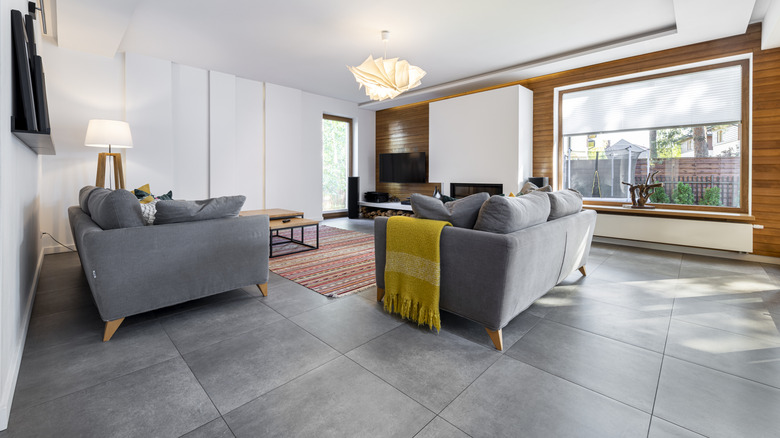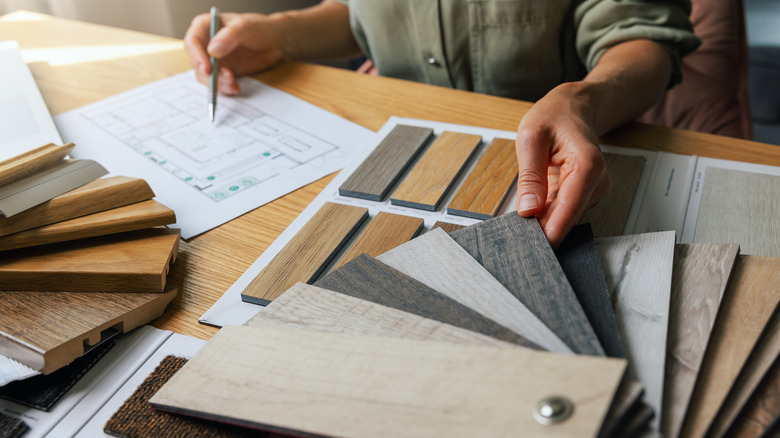Why People Are Getting Rid Of Their Natural Stone Floors (And What To Get Instead)
Homeowners who want a more luxurious look to their flooring may consider those made with natural stone. As the name suggests, natural stone floors are made with non-synthetic materials. You can find a variety of colors depending on the exact stone used, including those made from granite, marble, and slate, just to name a few. Natural stone is considered durable, and may work well as a statement in small spaces, such as foyers and bathrooms. However, some homeowners are rethinking natural stone floors because they can easily chip and stain despite their overall durability.
Due to its rock composition, it may be surprising that natural stone floors can get chipped, scratched, and stained. While these vulnerabilities certainly aren't exclusive to natural stone, some homeowners may be unwilling to invest in the higher cost of stone flooring. In fact, natural stone floor installation costs an average of $12 to $35 for each square foot. Natural stone floors are also notoriously difficult and costly to repair, especially if you cannot find replacement tiles to match the rest of the flooring. Another consideration is the return on investment of natural stone floors. Compared with ceramic and wood, which both have an average ROI of 70%, the ROI of natural stone flooring is estimated between 55% and 70%. These are all important aspects to know about natural stone before you buy.
Consider stone-effect luxury vinyl tile for easier maintenance and less cost
If want the look of stone but not the cost or the expensive repairs, you may consider stone-effect luxury vinyl tile instead. This type of flooring mimics the appearance of its natural stone counterparts, but is instead made with man-made (and sometimes recycled) materials that are more durable and easier to clean and maintain. Stone-effect LVT is not-porous, while natural stone is. This means that it is less likely to stain or harbor germs.
What's more, the installation is much more affordable, with LVT costing an average of $2 to $10 per square foot. If you plan on being in your home for a long time and are looking for affordability and durability, this could be a better option from a cost-benefit perspective. Nevertheless, LVT may also be among one of the flooring materials that may help increase your home's resale value due to its rising popularity in recent years. Finally, if you're not quite ready to give up stone entirely, another option is to use a combination of natural stone and stone-effect LVT throughout your home. The latter may work best in high-traffic areas of your home, such as kitchens, hallways, and living rooms, where spills, foot traffic, and dropped items may happen more often.

